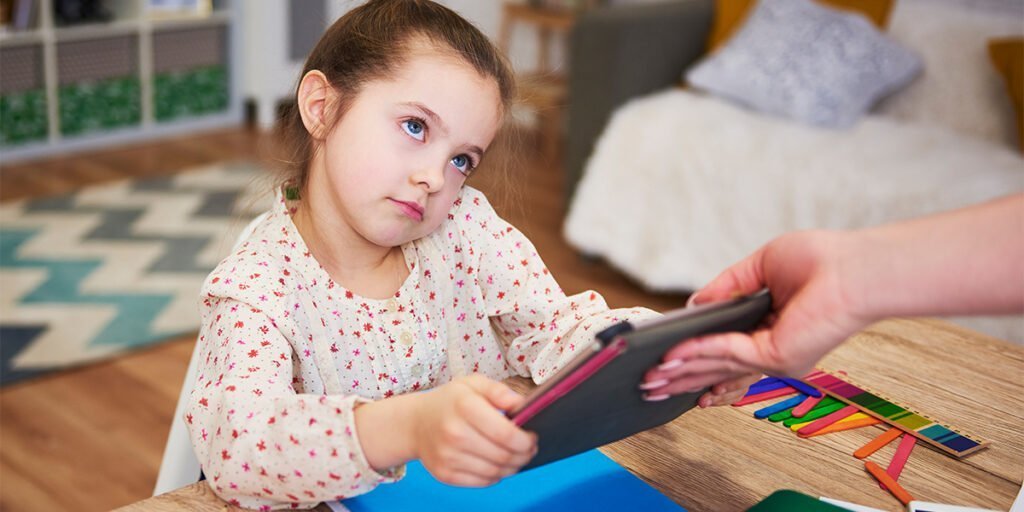When a parent takes the plunge back into marital bliss, it’s not just the adults who strap in for the ride; the children do too. The effects of remarriage on a child can range from delightful to challenging, reflecting the complexities of blending lives and histories. With divorce rates holding steady, many families find themselves navigating these waters. Understanding these dynamics is crucial for parents stepping into a new marital chapter.
Download and Start Your Free Trial of the Safes Parental Control App
For parents pondering remarriage, the phrase ‘married with kids’ takes on a whole new playbook. It’s essential to consider how this significant shift will affect your little ones. This blog will unpack the emotional suitcase that kids might carry, explore how roles within the new family structure evolve, and discuss strategies to ensure a smoother transition. Stay tuned as we dive deep into the dynamics of remarried life with children in tow.
Children’s Responses to Remarriage
When the news breaks that you’re getting married again, don’t be surprised if your child’s initial RSVP is less than enthusiastic. Children might experience a whirlwind of confusion, anger, or anxiety as they adjust to the new family dynamic. It’s like suddenly finding out that your favorite solo game is now a multiplayer event—you weren’t quite ready to share the pieces.
How kids react can greatly depend on their age and stage of development. Younger children might not grasp the concept of remarriage, seeing it simply as a playdate that never ends, while teenagers might understand the implications all too well, feeling left as if their feelings are secondary to your new love story. Each age brings a unique perspective and set of needs to the table.
For the younger crowd, you might notice more clinginess or a return to behaviors they had outgrown, like thumb-sucking or carrying around that old, tattered blankie again. They’re seeking comfort in familiarity because, in their world, the family dynamic has shifted, and it’s a lot to process.
Teenagers, on the other hand, might show their distress through withdrawal or defiance, challenging the changes as they navigate their path toward independence. It’s not uncommon for them to feel left out of the decision-making process, which can exacerbate feelings of isolation compared to those in intact families. Engaging these rebellious teeneagers directly can help bridge the gap and smooth the emotional terrain.
Factors Influencing Children’s Adjustment to Remarriage
A child’s adjustment to remarriage is significantly influenced by the existing bond with their biological parent. Strong relationships can serve as a secure base, making the transition smoother. But if the connection feels more like parallel parenting without much teamwork, children may struggle more with accepting a new family structure.
The role of the new stepparent cannot be overstated. A positive and patient approach to building this relationship can make all the difference. Remember, when thinking about how to tell your kids you’re getting married, it’s crucial to introduce the idea of a new stepparent as a bonus family member, not a replacement.
The shadows of past separations or divorces can linger and can color a child’s view of a happy marriage. If the previous breakup was tumultuous, children might be more apprehensive about the stability of new unions, worrying history could repeat itself. The more peacefully past issues were handled, the easier the path forward.
Lastly, never underestimate the power of a child’s individual temperament and personality in their adaptation process. Some kids might slide into the new family dynamic with ease, while others, perhaps more reserved or sensitive, need extra time and reassurance to adjust to changes within their family members and routines.

Potential Positive Effects of Remarriage
Remarriage can positively reshape family life, offering increased financial security, nurturing new relationships, and fostering traditions that can help children flourish.
Financial Stability and Support
Remarriage often brings financial stability to the family unit, with both partners combining resources. For children accustomed to the challenges faced by divorced parents, this support in a blended family can ease stress and provide a sense of security. When parents remarry, they can offer children access to opportunities like better schooling or extracurricular activities.
Positive Role Models
A successful remarriage showcases the benefits of positive role models and healthy relationships, demonstrating that it’s possible to accept your new relationship and thrive after adversity. This dynamic shows kids how mutual respect and effective communication work in a partnership, setting an example for their future connections.
Traditions and Bonds
Blended families who intentionally establish new traditions and rituals can foster strong bonds. For instance, hosting a weekly game night or exploring new hobbies together helps unite everyone under a shared purpose. These traditions become the glue that sticks the family together, forming memories that transcend their unique history.
Building Resilience
When parents remarry and create a supportive home, children often develop resilience. The combined love and care from a blended family encourages growth, helping children understand that life is filled with changes—and navigating them with humor and love can strengthen their ability to adapt.
Challenges and Potential Negative Effects
With remarriage, the introduction of stepparents and stepsiblings can stir the pot of sibling rivalry, making the family kitchen a bit too hot! Children may feel like they’re competing for the coveted prize of love and attention, especially when spending time together involves adjusting to the quirks and characteristics of new family members.
Also, children often face loyalty conflicts in blended families, feeling torn between expressing affection for a stepparent and staying true to their biological parents. This internal tug-of-war can lead to emotional stress, as kids grapple with where their allegiances should lie, and parents notice a split in their child’s attention.
Merging different parenting styles can also cause friction, particularly when discipline comes into play. A stepparent might have a different approach to rules and consequences, which can confuse children about what’s expected of them. This misalignment can undermine authority and disrupt the family’s sense of harmony.
If not navigated carefully, remarriage might strain the cherished parent-child bond. The emotional toll of feeling replaced or less important because a parent is now dividing their time can lead to withdrawal or behavioral issues in children, impacting their overall well-being and family dynamics.

Practical Strategies for Parents to Support Children
When supporting children through remarriage, these practical strategies can help parents foster a positive environment and guide their kids through the transition.
- Encourage Open Communication
- Support open discussions, allowing children to share their emotions.
- Reassure them it’s normal to feel confused or upset after remarriage.
- Listen actively, without judgment, and remind them that they’re not responsible for the parents’ divorce or any changes in romantic relationships.
- Maintain Consistent Routines
- Stick to familiar rituals like Sunday pancakes or bedtime stories.
- Reliable routines offer comfort amid shifting family dynamics.
- Predictable rhythms help create a sense of security and reassurance.
- Build Relationships Gradually
- Foster relationships between children and stepparents through gradual introductions.
- Shared activities and a slow pace help build rapport and trust.
- Respect children’s boundaries to create healthier bonds in the blended family.
- Provide Encouragement
- Recognize children’s progress as they adapt to the new family structure.
- Offer unwavering support and cheer them on.
- Help them face changes with confidence, building resilience for future family connections and romantic relationships.
Professional Support and Resources
For families finding the remarriage waters rough, consulting a mental health professional can be a game-changer. This is especially crucial for high school kids who might silently struggle. Therapy offers a space to voice concerns and develop strategies to manage the transition smoothly.
Don’t overlook support groups and specialized literature on blended family dynamics. These resources provide shared experiences and coping mechanisms, making you feel less isolated in your journey. If you notice significant behavioral or emotional changes in your children, it’s wise to seek professional advice promptly, ensuring everyone gets the support they need.
Study Summary: The Ripple Effects of Remarriage on Children
In a comprehensive study published by the American Psychological Association, researchers explored the emotional and psychological impacts of remarriage on children across various age groups. They employed longitudinal methods, tracking children’s adjustment over a five-year period through surveys and psychological assessments. This approach provided a dynamic insight into the short and long-term effects of entering a blended family structure.
The findings revealed that children’s adaptation varied significantly with age and the quality of the parent-child relationship prior to remarriage. Generally, younger children showed more immediate behavioral changes, while adolescents experienced emotional and social adjustments. Positive outcomes were notably higher in families where the stepparent relationship evolved in a supportive and gradual manner. These results highlight the critical role of parental strategies and the stepparent’s approach in fostering a stable family environment for children after remarriage.
Safes: Your Digital Parenting Partner
Introducing Safes, a cutting-edge parental control app designed to help you manage and monitor your child’s digital world. As families navigate the complexities of a blended family, keeping track of how your children spend their time online becomes even more crucial. Safes offers an intuitive solution, ensuring your kids are safe and productive.
Safes is equipped with robust features, more than what other options like iPhone parental controls might offer, like activity tracking, time limits, and social media monitoring. These tools empower parents to set healthy boundaries around digital usage. App management functions allow you to block or limit access to apps that may not be age-appropriate, helping maintain a balance between screen time and family time.
Ready to take control of your child’s digital life? Download the Safes app available on both iOS and Android. It’s tailored to help parents like you manage your children’s schedules effectively, ensuring they remain focused on what’s important—both online and off.
Experience all that Safes has to offer with a free trial. Test out the full suite of features and see how it can ease the transition into your new family dynamics.
Key Takeaways
Navigating remarriage is a unique challenge for parents and children. Understanding the effects of remarriage on a child requires patience, empathy, and open communication. Whether it’s through maintaining consistent routines or encouraging gradual relationships between kids and stepparents, practical strategies can help blended families thrive.
This transition period benefits greatly from parents being proactive in seeking information, resources, and tools, such as therapy or Safes, to create a nurturing family environment. Remarriage comes with hurdles, but with love and understanding, a new chapter filled with joy and support is within reach.
Your Child’s Online Safety Starts Here
Every parent today needs a solution to manage screen time and keep their child safe online.
Without the right tools, digital risks and excessive screen time can impact children's well-being. Safes helps parents set healthy boundaries, monitor activity, and protect kids from online dangers—all with an easy-to-use app.
Take control of your child’s digital world. Learn more about Safes or download the app to start your free trial today!




